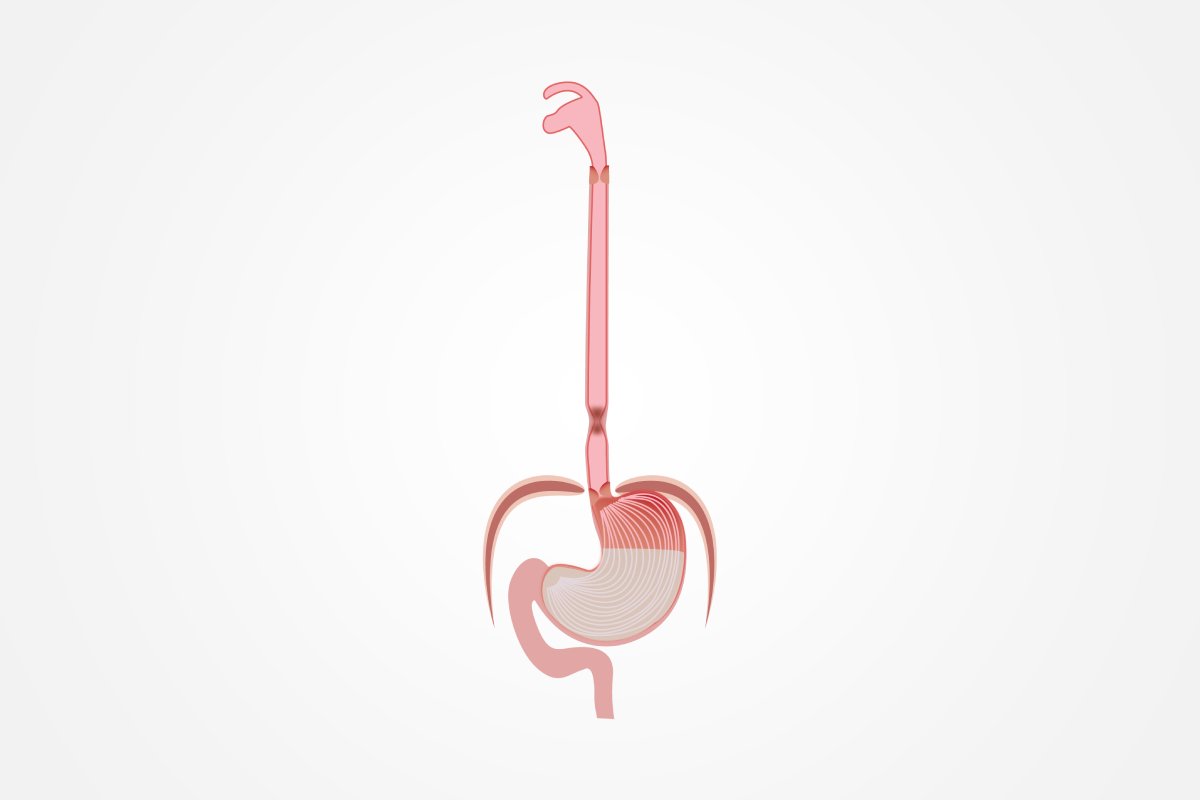Understanding Esophageal Stricture
The esophagus is an organ that transfers food from the oral cavity to the stomach and is also known as a food pipe. An esophageal stricture is an abnormal narrowing or tightening of the esophagus. This condition can lead to difficulty in swallowing food and liquid and a choking sensation after swallowing food.
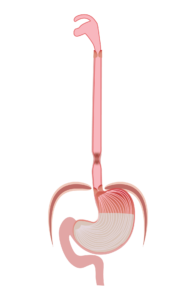
Esophageal Stricture
Types of Esophageal Strictures
- Benign (Non-cancerous): Non-cancerous strictures tend to progress more slowly. They can be caused by various diseases such as gastroesophageal reflux disease (GERD), ingestion of corrosive substances, eosinophilic esophagitis, or esophageal trauma due to tablets, a condition known as pill esophagitis. While these strictures are not cancerous, they still pose challenges to swallowing and may require intervention for symptom relief.
- Cancerous (Malignant): Cancer of the esophagus can also lead to the narrowing of the esophagus, a condition commonly known as malignant stricture. These strictures which are associated with cancer, progress rapidly and symptoms may worsen quickly.
Causes of Esophageal Strictures
The following are some of the causes that may lead to esophageal strictures:
- Gastroesophageal Reflux Disease (GERD): When stomach acid flows backward into the esophagus and causes damage to the esophageal lining. Reflux leads to swelling and ulcer formation in the esophagus, which may heal with stricture formation.

Gastroesophageal Reflux Disease (GERD)
- Eosinophilic Esophagitis: An allergic reaction or immune system problem like eosinophilic esophagitis may cause inflammation in the esophagus, potentially leading to strictures.

Eosinophilic Esophagitis
- Radiation Therapy: Many patients undergo radiotherapy for tumors of the head, neck, chest, or breast. A side effect of radiotherapy may be inflammation and stricture formation in the esophagus.
- Surgery: Many patients undergo surgery for esophageal problems and a new joint is formed between the esophagus and stomach or small intestine. Narrowing and stricture formation may occur at the site of new joint formation.
- Esophageal Cancer: Abnormal tissue growth in esophageal tissue can lead to tumor formation, which can cause narrowing and stricture in the esophagus.

Esophageal Cancer
- Corrosive (Acid or Alkali): Corrosive ingested accidentally may lead to ulcer and stricture formation in the esophagus.
- Achalasia Cardia: Achalasia cardia does not lead to fixed stricture in the esophagus, but leads to tightness of the lower esophageal sphincter (LES), which fails to open after swallowing food, causing dysphagia.
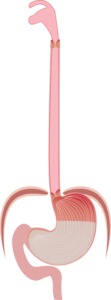
Achalasia Cardia
Other Causes
- Autoimmune conditions: Autoimmune conditions may lead to inflammation and stricture formation in esophagus
- Certain Medications: Certain tablets such as doxycycline or potassium tablets can lead to injury and stricture formation in esophagus
- Infections: Infections such as tuberculosis and virus infections may lead to narrowing in esophagus.
These varied causes highlight the importance of identifying the underlying factor contributing to esophageal strictures for effective diagnosis and management. Additionally, addressing the primary condition is often crucial for long-term success in treating and preventing the recurrence of strictures.
Symptoms of Esophageal Strictures
The key symptoms associated with esophageal strictures are as follows:
- Difficulty Swallowing (Dysphagia): Narrowing of the esophagus makes it challenging for food and liquids to pass through and the patient may find it difficult to swallow the solid food as well as simple liquids.

- Frequent Episodes of Choking: When a patient with esophageal stricture swallows a large bolus of food, such bolus may get impacted at the site of stricture, causing severe pain in the chest.
- Burning Sensation: Patients having esophageal stricture may experience irritation or burning sensation in the neck or throat.
- Bleeding from the mouth or in stool: In a few patients with esophageal stricture specially in patients with GERD and carcinoma esophagus, bleeding from friable tissue may occur and the patient may pass black stool or may have blood in vomiting.
- Weight loss: Patients with esophageal stricture are not able to take adequate calories and this may lead to weight loss. The release of harmful chemicals by cancer tissues is another cause of weight loss.
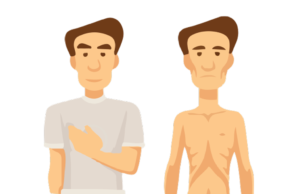
Diagnosis of Esophageal Strictures
The evaluation of esophageal strictures typically involves a comprehensive approach that includes the following components
- Medical history and physical examination: History taking and examination are important in reaching correct diagnosis. Detailed medical history and physical examination may help in differential diagnosis.
Diagnostic Tests
- Endoscopy with Biopsy (Esophagogastroduodenoscopy or EGD): Endoscopy is the most important test to diagnose the esophageal cancer. Many patients has fear of passage of discomfort during endoscopy. Endoscopy is performed in fasting condition, patient should usually avoid food for 8 hours prior to endoscopy. Most commonly intravenous anaesthesia is given, and endoscopy is performed after proper sedation. Endoscopy performed under anaesthesia becomes painless procedure without any discomfort. A thin, flexible tube called an endoscope with camera is passed through the mouth into the esophagus. At the same time, endoscopy can also be passed into organs below esophagus such as stomach and duodenum. During endoscopy, detailed examination is done for direct visualization of any strictures, inflammation, or other abnormalities and allows for biopsy of the lesion. Biopsy from esophagus lesions is a safe procedure without significant complications.
- Image-enhanced endoscopy: New generation endoscopes are equipped with new technology such as Image enhanced endoscopy. This technique may help in differentiating cause of stricture and early diagnosis of malignancy
- CT scan: In patients with suspected malignancy or Tuberculosis, CT can be helpful in determining the extent of the disease
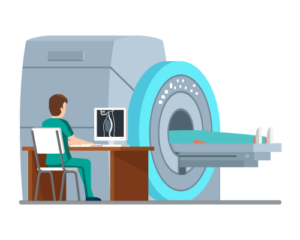
- Barium swallow: During this test, patient swallow a special liquid containing Barium and X ray is obtained. Based on barium swallow, cancer or non-cancerous diseases are suspected, and patients are investigated accordingly.
- Esophageal manometry: If endoscopy is normal and achalasia cardia is suspected during endoscopy, next test should be esophageal manometry. Esophageal manometry should be performed in conscious state as patient has to swallow water during manometry. During manometry, catheter is passed through the nose in esophagus. Initially baseline pressures are recorded, after that patient take multiple swallows of water. After swallow, pressures in food pipe and lower esophagus sphincter are measured. Based on Chicago 4 classification, diagnosis of motility disorders such as achalasia cardia is confirmed.
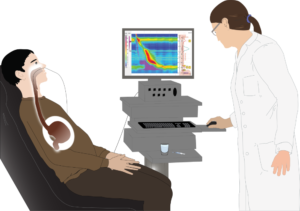
Treatment of Esophageal Strictures
The treatment of esophageal stricture depends on the underlying cause, the severity of the stricture, and the symptoms experienced by the individual. Here are some common approaches to the treatment of esophageal strictures:
- Medical management: If gastroesophageal reflux disease (GERD) is a contributing factor, medications like proton pump inhibitors (PPIs) may be prescribed to reduce stomach acid and prevent further damage.
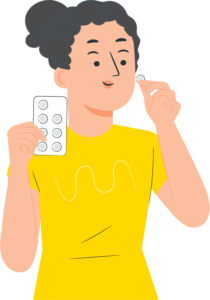
- Lifestyle and Dietary Changes: Soft or liquid diets may be recommended initially to ease swallowing. Eating in an upright position and avoiding lying down after meals may help prevent reflux

Endoscopic procedures
- Balloon Dilation: A procedure in which a balloon is inflated to stretch and widen the narrowed portion of the esophagus.
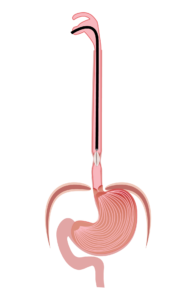
Balloon Dilation
- Endoscopic Stenting: Metal stent is placed across stricture to open it. This is often used for certain types of strictures, including those caused by cancer
- Injections: Injecting substances (such as steroids) into the stricture along with dilatation, may be beneficial to reduce inflammation and help prevent recurrence.
Surgery
- Fundoplication: Recurrent stricture in patients with GERD may be treated with fundoplication. During fundoplication, part of stomach is tightened around lower part of esophagus and prevent reflux of acid.
- Surgery for malignant strictures: Early-stage cancers may be cured by surgery. Many patients with cancers may require chemotherapy and radiotherapy.
Regular follow-up is required after treatment is required to monitor the response to treatment and to address any recurrent symptoms or complications.
Summary
Esophageal strictures are causes by various diseases; dysphagia is most common presentation. Clinical evaluation and investigations such as endoscopy, CT scan and barium swallow may help in reaching correct diagnosis. Treatment depends on the underlying cause, and regular follow up is required after the treatment.

